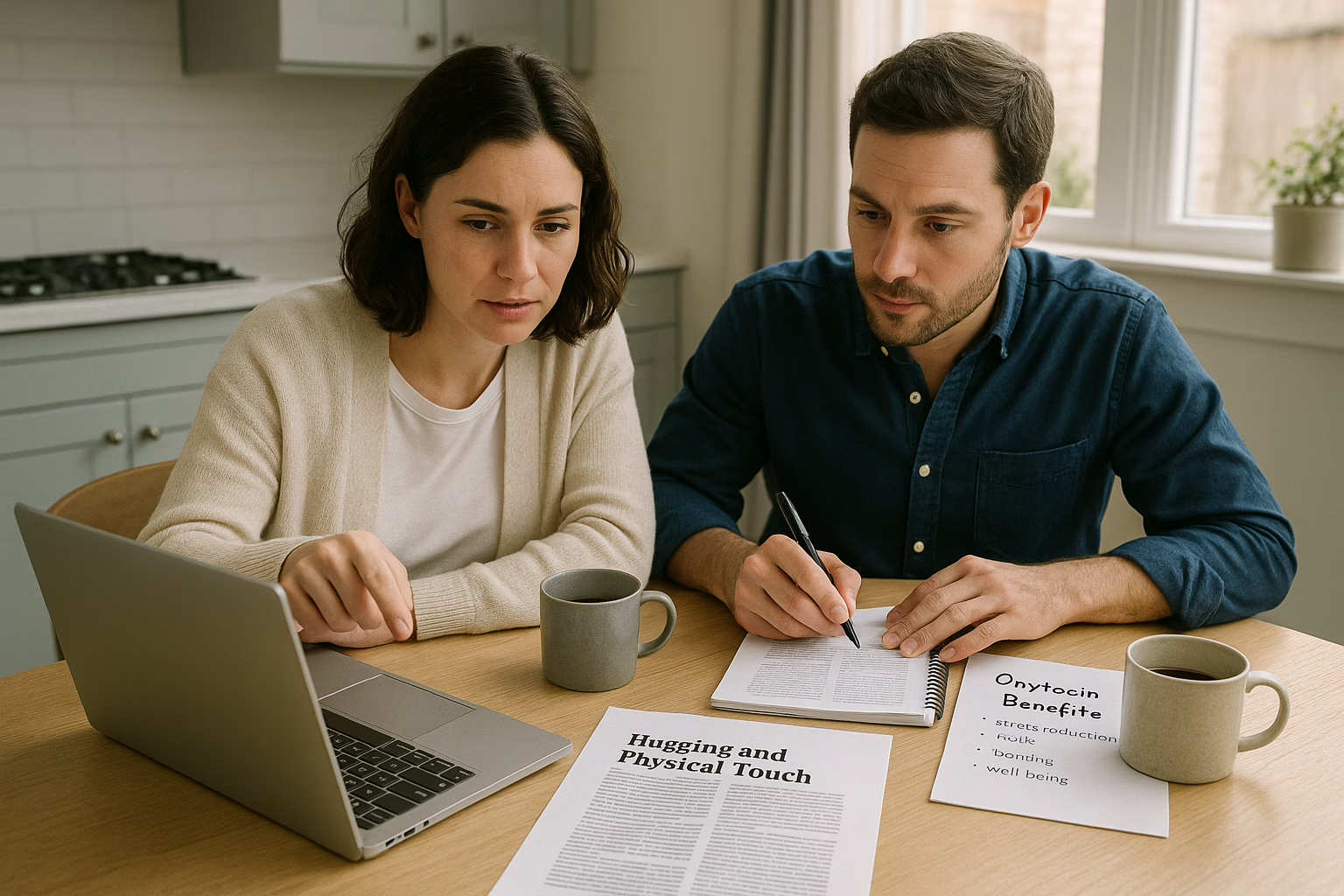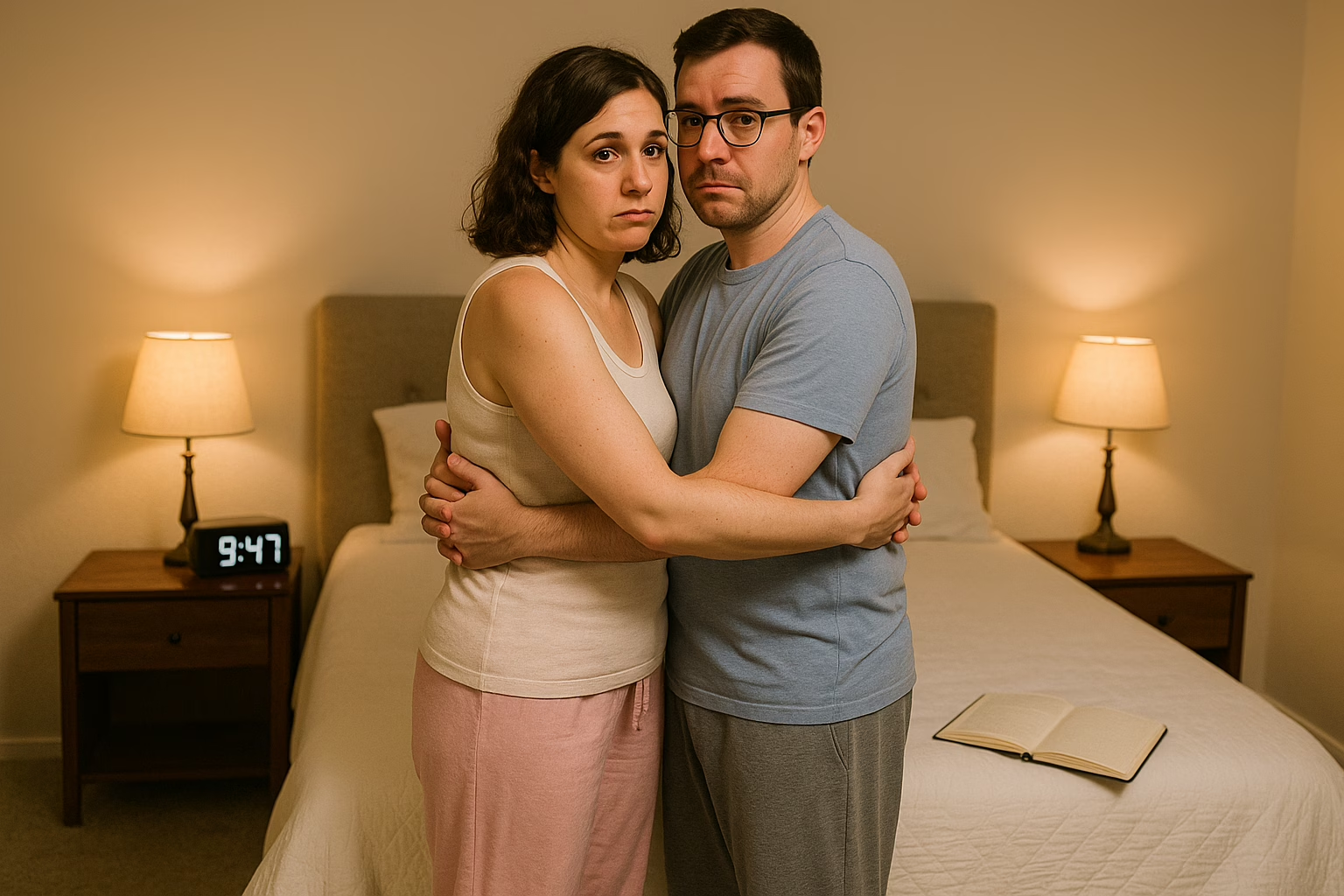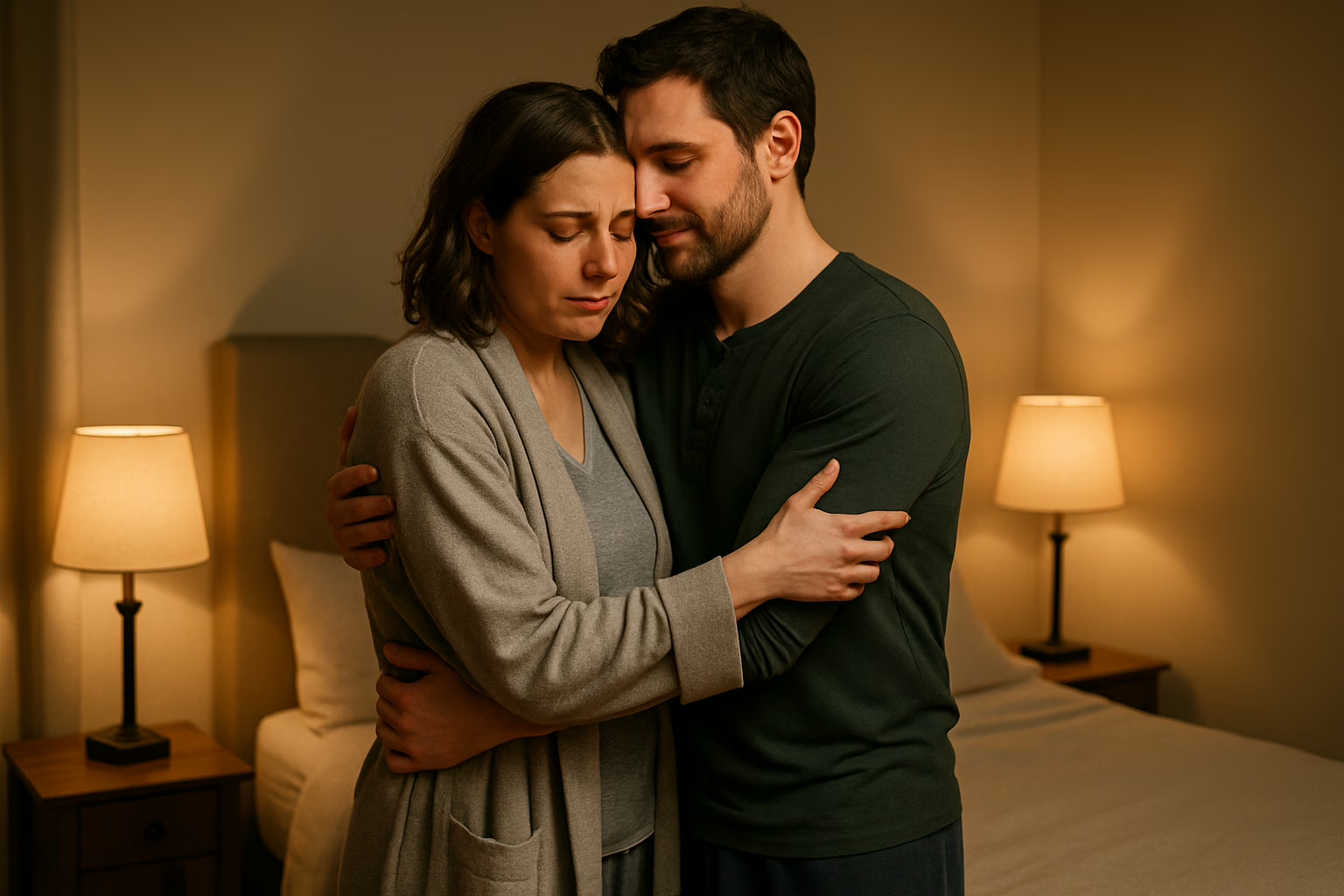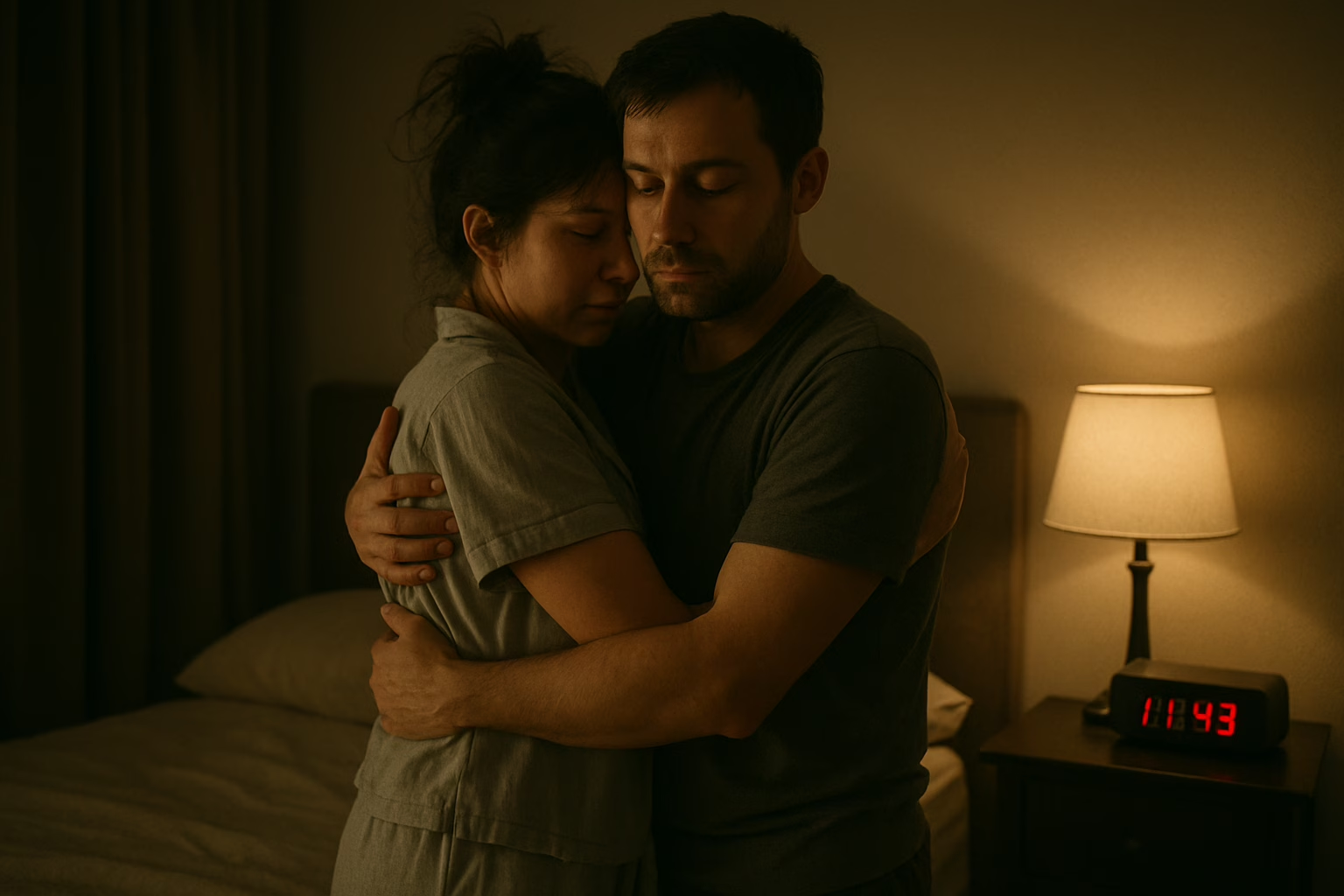
What started as a simple curiosity about physical touch became one of the most transformative relationship experiments my partner Jake and I have ever undertaken. Our 30-day pre-sleep hugging experiment didn’t just change our bedtime routine – it revolutionized our entire approach to intimacy, communication, and emotional connection.
In our fast-paced world of endless screens and busy schedules, physical affection often gets relegated to quick pecks goodbye or distracted embraces while multitasking. We wondered: what would happen if we committed to one intentional, mindful hug every single night for a month? The results surprised us in ways we never expected.
The Science Behind Therapeutic Hugging
Before diving into our personal experience, it’s worth understanding the scientific foundation behind why hugging might be so powerful. Research shows that physical touch releases oxytocin, often called the “love hormone” or “bonding hormone.” This neurochemical doesn’t just make us feel good – it actively reduces cortisol (stress hormone) levels, lowers blood pressure, and can even boost immune function.
Dr. Matt Hertenstein’s research at DePauw University found that appropriate touch can communicate emotions more effectively than facial expressions or voice tone. A 20-second hug can release enough oxytocin to create measurable physiological changes, including reduced heart rate and improved mood regulation.
Furthermore, studies on couples who maintain regular physical affection show higher relationship satisfaction, better conflict resolution skills, and improved sleep quality. Armed with this knowledge, Jake and I felt confident that our month-long experiment had solid scientific backing.

Setting Up Our Experiment
We established clear parameters to ensure consistency and meaningful results:
Timing: Every night, immediately before getting into bed, around 9:30-10:00 PM
Duration: Minimum 60 seconds, maximum as long as felt natural
Environment: Our bedroom, phones put away, minimal distractions
Approach: Full-body embrace, no talking required but conversation allowed if it arose naturally
Documentation: Brief individual journal entries each morning about sleep quality, mood, and relationship observations
We also agreed that either partner could extend the hug duration if desired, but neither would cut it short before the one-minute minimum. This wasn’t about obligation – it was about creating space for genuine connection.
Week 1: Awkward Beginnings and Sweet Surprises
Days 1-3: The Adjustment Period
The first few nights felt surprisingly awkward. After six years together, you’d think hugging would be natural and effortless. But there’s a difference between casual, distracted embraces and intentional, mindful ones. We found ourselves hyper-aware of breathing patterns, where to put our arms, and whether we were “doing it right.”
Night one lasted exactly 60 seconds – we both counted silently. By night three, we realized the counting was creating performance anxiety rather than connection, so we switched to simply being present until the embrace felt naturally complete.

Days 4-7: Finding Our Rhythm
Something shifted midweek. Our bodies began to relax into each other more naturally. The hugs started lasting longer without conscious effort – usually 2-3 minutes. We discovered that this time created a natural transition from the day’s activities into evening peace.
Jake mentioned that he looked forward to our hug time, which surprised him. “I thought it would feel like another task,” he wrote in his journal, “but it’s becoming the best part of my day.”
I noticed similar feelings. The anticipation of our nightly connection made me more conscious of how I wanted to end each day. I found myself naturally winding down earlier, putting away phones and laptops in preparation for our ritual.
Week 2: Deeper Connection Emerges
The Conversation Barrier Breaks
Week two brought an unexpected development: our silent hugs began including whispered conversations. Not planned discussions or problem-solving sessions, but gentle sharing about the day, appreciations, or simple observations.
These weren’t the typical “how was your day” exchanges we’d have over dinner. Held in each other’s arms, our sharing became more vulnerable and authentic. Jake told me about a moment of self-doubt at work he hadn’t mentioned earlier. I shared a memory from childhood that a scent in our garden had triggered.

Sleep Quality Improvements
Both of us began noting better sleep quality in our journals. I typically took 15-20 minutes to fall asleep, but during week two, I was drifting off within 5-10 minutes of lying down. Jake, who often experienced middle-of-the-night anxiety spirals, reported more consistent, uninterrupted sleep.
The physical relaxation from our hugs seemed to activate our parasympathetic nervous systems – the “rest and digest” mode that prepares bodies for restorative sleep. But beyond physiology, there was an emotional settling that happened. Ending the day with intentional connection created a sense of completion and peace.
Week 3: Unexpected Challenges and Growth
The Difficult Days
Not every night was blissful. Week three included several challenging days where we approached our hug time tired, frustrated, or emotionally disconnected. These nights taught us the most about the experiment’s real value.
On day 18, we’d had a tense disagreement about household responsibilities. I didn’t want to hug – I wanted to stay annoyed and prove my point through distance. But we’d committed to the experiment, so we embraced anyway.
Something remarkable happened. About 90 seconds into the hug, my anger began dissolving. Not because the issue was resolved, but because I remembered that this person I was holding was my partner, not my adversary. We ended up having a much more productive conversation about the underlying problem after our hug.

Physical Awareness and Intimacy
Week three also brought increased awareness of each other’s physical presence throughout the day. I found myself more conscious of how Jake moved through our home, more attentive to his posture and energy levels. He mentioned similar observations about me.
Our overall physical intimacy increased naturally. Not just sexually, but in casual touches throughout the day – a hand on the shoulder while passing in the kitchen, spontaneous brief embraces, more frequent hand-holding. The nightly ritual seemed to increase our overall comfort with physical affection.
Week 4: Integration and Transformation
The Ritual Becomes Natural
By the final week, our bedtime hug had become as natural and essential as brushing our teeth. We no longer needed to remember or discuss it – our bodies and rhythms naturally moved toward this connection each evening.
The duration had settled into a comfortable 3-5 minutes most nights, longer when one of us needed extra support or comfort. We’d developed subtle ways of communicating within the embrace – a gentle squeeze might mean “I love you,” a deeper settling into the hug conveyed “I need this today.”

Emotional Regulation Benefits
One of the most significant discoveries was how our nightly connection affected emotional regulation throughout the following day. I noticed I was less reactive to stress, more patient with interruptions, and generally more emotionally stable.
Jake observed similar changes. His tendency toward anxiety spirals decreased noticeably. When stressful situations arose, he seemed better equipped to maintain perspective and respond rather than react.
We theorized that starting each 24-hour cycle with intentional connection and ending it the same way created emotional bookends that provided stability and security.
The Surprising Results: What We Discovered
Quantitative Observations
After 30 days, we compiled our journal entries and identified several measurable changes:
Sleep Quality:
- Average time to fall asleep decreased from 18 minutes to 8 minutes
- Night wakings reduced by approximately 60%
- Morning energy levels increased (self-rated 6.2/10 to 7.8/10)
Relationship Satisfaction:
- Daily appreciation expressions increased naturally
- Conflict resolution improved (arguments lasted shorter, resolved more completely)
- Physical affection throughout the day increased by an estimated 40%
Individual Wellbeing:
- Stress levels decreased (self-reported)
- Mood stability improved
- Overall life satisfaction increased

Qualitative Transformations
Beyond measurable changes, we experienced profound shifts in how we related to each other:
Presence and Mindfulness: Our ability to be fully present with each other improved dramatically. The daily practice of mindful embracing translated into more attentive listening and engagement throughout the day.
Emotional Safety: The consistent physical connection created a deeper sense of emotional safety in our relationship. We felt more secure expressing vulnerabilities and taking emotional risks.
Gratitude and Appreciation: Ending each day with intentional connection naturally led to more awareness of what we appreciated about each other and our relationship.
Conflict Resolution: Physical connection before discussions helped us approach disagreements from a place of connection rather than defensiveness.
The Unexpected Ripple Effects
Social and Professional Impacts
The benefits of our experiment extended beyond our romantic relationship. Both of us noticed improvements in our platonic relationships and professional interactions.
I became more comfortable with appropriate professional physical contact – handshakes felt more confident, and I was more natural in group settings that involved casual social touch. Jake reported feeling more grounded and centered during high-stress work situations.

Family and Friend Relationships
We both became more physically affectionate with family members and close friends. Our comfort with meaningful touch had expanded, leading to warmer greetings, more frequent hugs with loved ones, and generally more physically expressive relationships across the board.
My relationship with my teenage niece improved noticeably when I became more comfortable offering and receiving hugs during family gatherings. Jake mentioned similar experiences with his elderly parents, who seemed to appreciate his increased physical affection.
Challenges and Obstacles We Overcame
Scheduling and Consistency
Maintaining consistency for 30 straight days required genuine commitment. We traveled twice during the month, stayed late at social events, and had nights when we were simply exhausted.
The key was flexibility within consistency. When we returned home at midnight from a wedding, we still had our hug – it was shorter and we were both tired, but we maintained the ritual. When Jake was sick with a cold, I held him more gently but still provided the connection he needed.
Emotional Resistance
Some nights, one or both of us felt emotionally closed off or resistant to intimacy. These were often the nights we needed the connection most, but they required pushing through internal resistance.
We learned that starting the hug even when we didn’t feel like it usually led to genuine connection within the first minute. The key was showing up to the practice even when motivation was low.

Self-Consciousness and Performance Pressure
Initially, we both experienced some performance anxiety around “doing it right.” Were we hugging correctly? Long enough? With the right intention?
We overcame this by regularly reminding ourselves that the goal wasn’t perfection but connection. Some nights our hugs were deeply moving, others were simply pleasant. Both were valuable.
Long-Term Integration: 6 Months Later
It’s been six months since our initial 30-day experiment ended, and bedtime hugs have become a permanent part of our relationship. The practice has evolved naturally – some nights it’s a quick, sweet connection, others it becomes an extended time of sharing and intimacy.
We’ve added variations when they feel natural: sometimes we sit on the edge of the bed instead of standing, occasionally we include gentle back rubs, and we’ve developed different embraces for different moods and needs.

Scientific Validation of Our Experience
Our personal results align closely with research findings on therapeutic touch and relationship satisfaction. Dr. Kory Floyd’s studies at Arizona State University show that affectionate touch in romantic relationships correlates with lower stress hormones, better cardiovascular health, and improved mood regulation.
The duration we naturally settled into (3-5 minutes) aligns with research suggesting that oxytocin release peaks around the 20-second mark but continues building with longer physical contact. Our experience of improved sleep quality matches studies showing that oxytocin promotes deeper, more restorative sleep cycles.
Perhaps most significantly, our improved conflict resolution abilities match research showing that couples who maintain regular physical affection show better relationship resilience and more effective problem-solving skills.
Practical Guide: Starting Your Own Hugging Experiment
If our experience inspires you to try your own hugging experiment, here are practical recommendations:
Getting Started
Set Clear Intentions: Discuss what you both hope to gain from the experience
Choose Consistent Timing: Pick a time that works for both partners’ schedules
Create the Right Environment: Minimize distractions, put devices away
Start Small: Consider beginning with 10-14 days before committing to a full month
Maintaining Consistency
Track Your Experience: Keep brief journals or notes about observations
Be Flexible: Adapt for travel, illness, or unusual circumstances while maintaining the core practice
Communicate Openly: Share what you’re noticing and experiencing
Release Expectations: Some hugs will be transcendent, others simply pleasant – both have value
Troubleshooting Common Challenges
Initial Awkwardness: Normal and temporary – most couples adjust within 3-5 days
Emotional Resistance: Show up anyway; connection often develops during the embrace
Scheduling Conflicts: Prioritize the practice; it only requires 2-5 minutes
Different Preferences: Communicate about duration, pressure, and style preferences
Beyond Hugging: Expanding Physical Connection
Our experiment sparked interest in other forms of intentional physical connection:
Morning Hand-Holding: Five minutes of connected silence with morning coffee
Gratitude Touch: Brief shoulder touches when expressing appreciation
Transition Hugs: Embraces when one partner arrives home or leaves
Meditation Together: Sitting back-to-back during mindfulness practice
Each of these practices builds on the foundation of comfort and intention we developed during our original month-long experiment.
The Broader Impact on Relationship Philosophy
Perhaps the most profound impact of our hugging experiment was a shift in how we approach our relationship overall. We learned that small, consistent practices can create significant change – that transformation doesn’t require grand gestures or dramatic interventions.
The experiment taught us to value presence over productivity, connection over conversation, and consistency over intensity. These lessons have influenced how we approach not just physical intimacy, but emotional intimacy, conflict resolution, and life planning together.
Addressing Common Concerns and Questions
“Doesn’t this become routine and lose meaning?”In our experience, meaningful rituals become more powerful over time, not less. Like meditation or prayer, the repetition creates depth rather than boredom.
“What if physical touch isn’t our love language?”Physical touch as a love language refers to ongoing preferences. Our experiment was about expanding comfort and connection, which benefited us regardless of our primary love languages.
“How do you handle it when you’re angry with each other?”Some of our most valuable hugs happened when we were frustrated or disconnected. Physical connection often bridges emotional distance more effectively than verbal processing.
“What about couples dealing with trauma or touch aversion?”Any experiment involving physical touch should respect individual boundaries and trauma histories. Professional guidance may be helpful for couples where touch triggers difficulty.
Conclusion: The Simple Power of Intentional Touch
Our 30-day pre-sleep hugging experiment taught us that some of the most profound relationship improvements come from the simplest practices. In a world that increasingly prioritizes digital connection over physical presence, choosing to embrace each other intentionally every day created ripple effects we never could have predicted.
The benefits extended far beyond better sleep and increased intimacy. We developed deeper emotional regulation, improved conflict resolution skills, enhanced overall wellbeing, and a stronger foundation of security and connection that continues to support our relationship today.
If you’re curious about trying your own hugging experiment, we encourage you to approach it with openness, commitment, and patience with the process. The most meaningful changes often happen gradually, building foundation beneath your relationship that you may not fully appreciate until much later.
Sometimes the most powerful relationship interventions are also the most accessible. All it takes is the willingness to hold each other, intentionally and regularly, and see what unfolds.


